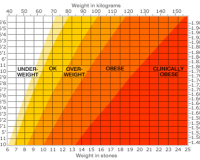
Adapting Recipes
‘Learn to adapt your favourite home cooked foods making them suitable for your kidney diet.’
The good news is that, many standard cookbooks or celebrity chef recipes can be used safely through a little adaptation and some imagination to make them lower in potassium, sodium and phosphate.
To help you to identify any adaptation required, we recommend that you read each new recipe (or old favourites) with your kidney (renal) diet allowances clear in your head and your diet sheet of foods best avoided close to hand. Your Kidney (Renal) Dietitian can help you to adapt recipes or review those that you have self adapted.
Here are some suggestions to make your favourite recipes more kidney friendly
Tips to help you to become a kidney friendly baker:
- Use reduced amounts of salt or omit it all together from the recipe. Use herbs and spices (e.g. nutmeg, cinnamon) instead of salt to add flavour.
- Use yeast, bread soda / bicarbonate of soda as a raising agent instead of baking powder. Breads and cakes will then be lower in phosphate than those using baking powder. Bread soda / bicarbonate of soda require an acidic fluid like lemon juice or buttermilk to act as a raising agent. Be sure to include these in your daily allowances.
- Choose lower potassium fruits when baking tarts, muffins and fruit pies such as apple, pear, pineapple, cranberries and blueberries or drained tinned fruit (remember to include the fruit as part of your daily kidney diet fruit allowance).
- Choosing the unsalted varieties of butter for baking will make a recipe more kidney friendly by reducing the salt (sodium) content.
- Double cream plus water is a good alternative to single cream or milk. Making this simple change will lower the phosphate content of the recipe and help you with your daily dairy allowances (reduced phosphate kidney diet).
- Unfortified rice milk is lower in potassium and phosphate than cow’s milk and may be used to make puddings.
- Use egg whites as they are lower in phosphate than egg yolks and are useful for desserts e.g. meringues.
Making main meal dishes kidney friendly:
- Reduce potato intake to reduce dietary potassium intake. Use rice, pasta, noodles, couscous or breads instead of potatoes with main meals. This will lower the overall potassium content of the dish.
- Avoid prepared tomato sauces. Try a small amount of fresh tomato instead, or if making a pasta dish, use olive oil and garlic instead of a tomato based sauce to dress / flavour the pasta. This will lower the potassium content and make your pasta dish more Kidney friendly.
- To lower potassium content, vegetables can be par boiled before being added to recipes (e.g. carrots, broccoli or cauliflower in a curry). If you are following a strict low potassium kidney diet, fully boil your vegetables (link low potassium vegetable cooking instructions page) and add to the composite meal (e.g. kidney friendly stew, curry) for the last 10 – 15 minutes of cooking.
- For dishes that contain high potassium vegetables e.g. Mushrooms, substitute them for lower potassium vegetables e.g. Green (French) beans
- For stir-fry dishes avoid using higher potassium vegetables such as pak choi, bamboo shoots or mushrooms. Substitute them with Green (French) beans, Bean-sprouts or Cabbage. If you require a strict low potassium kidney diet, remember that stir fry vegetables retain a high percentage of potassium during cooking. Link with your Kidney (Renal) Dietitian and discuss your kidney diet allowances.
- To reduce salt (sodium) intake in your kidney diet, avoid using regular soy sauce, limit reduced salt (sodium) soy sauce to small amounts and limit the amount of other high salt (sodium) sauces such as fish, oyster, teriyaki or sweet and sour sauces. Try using vinegar, ginger or a little sesame oil as alternative flavourings to make a meal more kidney friendly.
- Double cream plus water is a good alternative to single cream or milk in savoury dishes. Making this simple change will lower the phosphate content of the recipe and help the recipe to fit into the daily allowances of a reduced phosphate kidney diet.
- If dishes contain cheese, use this sparingly or choosing a lower
phosphate cheese e.g. Brie, camembert, parmesan, feta, cottage or cream cheese.
- Make a fish dish more Kidney friendly by substituting shellfish or smoked fish in the recipe for white fish such as cod, whiting or plaice. This will reduce the salt (sodium) and phosphate content of the dish.
- To reduce salt (sodium) content use a low salt stock cube as recommended by your Kidney (Renal) Dietitian as a base for stock. Do not add any extra salt.


